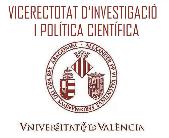 |
 |
 |
|
 | |||
Manuscript submission rules Manuscripts for publication in the Conference Proceedings can be submitted up to the deadline of 15th September 2007. The Conference Proceedings will be distributed among the participants during the conference. Texts must comply exactly with the following edition rules. Manuscripts that arrive after this deadline or that do not comply with these edition rules will be excluded from publication in the book. Manuscripts must be sent in digital format, in one file only, in Microsoft Word, and must be under the author’s surname(s), without spaces. Example: ArenasDolz.doc. Additionally, authors must send another file with a brief summary of their CV (100 words maximum), in the language of the publication. This must be under the author’s surname(s), without spaces, and the letters “CV”. Example: ArenasDolzCV.doc General characteristics of the manuscripts 1. Languages: Spanish, Valencian, German, English, French and Italian. 2. Length: 10 pages (including title, summary, abstract, main text, notes and bibliography). 3. Page numbers: pages will not be numbered. 4. Page size: default Word margins (top and bottom, 2.5 cm; left and right, 3 cm).<0} 5. Font, alignment, and line space: Times New Roman, justified, 1.5 lines.
6. The use of tables, graphics and/or diagrams should be avoided. 7. The use of bold, underlining, and uppercase formats inside the text should be avoided. To emphasise a term, italics should be used. 8. The use of italics should be restricted to book titles, names of journals or magazines, foreign terms, and special emphasis (see point 7.) 9. Sections and subsections should be numbered with Arabic numerals followed by a dot, with a space between the number and the text. The use of uppercase, bold, and/or italics to distinguish sections and subsections should be avoided. Example:
10. Punctuation: this will be treated as usual, leaving only one space after every coma, colon, semi-colon, full stop or full stop preceding a new paragraph. Abbreviations will be followed by one dot, followed by a full stop if ending a sentence. When using dashes in a paragraph, the second dash, if occurring at the end of a sentence is replaced by the full stop. Example: I know –answered she–. There should be no full stop after the title of the communication or at the end of section or subsection titles. Also, there is no full stop after the question mark or exclamation marks, as they already include a dot. After a colon, the first letter is lowercase. An ellipsis consists of three points, or four at the end of the sentence. 11. The text must be written continuously, without double spaces, tabs, page breaks, or other systems for manual layout. There will be no tabs at the beginning of paragraphs to simulate indentations, or multiple manual line breaks (enter keystrokes) between paragraphs to increase separation between them. 12. Quotation marks: Different languages have their own types of quotation marks, which authors may use in accordance with the language the communication is written in, if considered appropriate. In Spanish there are three types of quotation marks: Spanish quotation marks (« »), double quotation marks (“ ”) and single quotation marks (‘ ’). As a general rule, texts written in Spanish will use Spanish quotation marks. If an additional citation appears inside the text already in quotation marks, other quotation marks may be used. Spanish quotation marks are used to present a literary citation; double quotation marks to refer to the expression of an author; simple quotation marks to present the meaning of a word. 13. Abbreviations in Spanish: Chapter.................. cap. Column................... col. Compare................. cfr. Ibidem……ib. (in italics) Idem……...id. (in italics) Sheet.......................fol. Book....................... lib. Line......................... lín. Note......................... n. Number(s)............... nº Op.cit……o.c. (in italics) Page(s)..................... p. Tome........................ t. See........................... v. Volume................... vol. 14. Abbreviations in other languages: For communications written inlanguages other than Spanish, the authors can use the most common abbreviations for the language their communication is written in. 15. Terms in other languages: Terms appearing in other languages different to that of the communication should appear in italics. Terms in other alphabets different from Latin should be transcribed. 16. Short quotations (under three lines) should go in Roman type, in quotation marks, in the main body of the text. Long quotations (more than three lines) will be printed in Roman type, 10pt, separated from the main text. If there is an elision inside the citation, it should be indicated with three dots in square brackets [...]. 17. Footnotes should be numbered sequentially throughout the document, and should be used mainly to provide bibliographic references. The use of footnotes to provide explanatory digressions should be avoided as much as possible. The footnote reference mark will appear in the text in Arabic numbers, in superscript, and always after the punctuation mark that follows the word introducing the footnote. 18. Bibliographic references will be included in footnotes. Thus, authors should refrain from offering a bibliography list at the end of the text. General bibliographic references The names of the authors appearing in footnotes will be formatted in small capitals, starting with the surname(s) and followed by the name or initial (example: Pérez Martínez, P.). In bibliographic references, the city of the publishing house should always be translated to the language of the communication. Books:
Journal articles:
Article published within a book or book chapter:
Quotes of Nietzsche’s texts 1. References from quotes of his works in German and Nietzsche’s collected letters will not be indicated in a footnote, but inserted in the text, between brackets, as indicated in paragraph b.2 and in the following way: Complete works edition, work or fragment or letter, number of the volume of the complete works, page number. Examples:
2. Acronyms and abbreviations of the works in German:
3. For the quotations of Nietzsche’s works in the Spanish translation (trad. esp.), English translation (Engl. transl.), French translation (trad.fr) or Italian Translation (trad. it.), see general bibliography rules (paragraph a). The first time the quote from a translation of Nietzsche’s work appears, a footnote will be included with the full reference to that translation:
The following occasions, references will be included in a footnote, containing the name of the author, the title of the work (in italics) and the respective page number:
If the author desires to indicate both references, the work in its original version and its translation to one of the languages of the Conference, the quote will be included in the body of the text, in brackets, in the following way (KSA, GM 1, 46 [trad. esp. 17]), indicating the full reference in a footnote, if it is the first time that this translation is quoted. |
|||